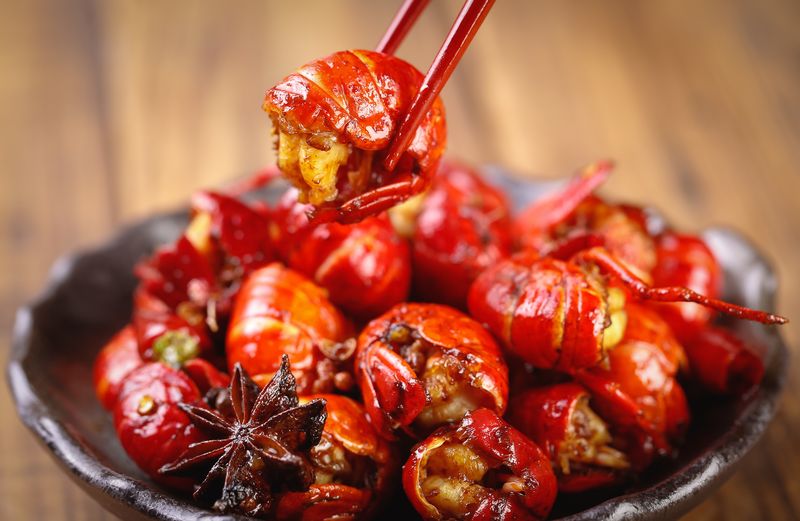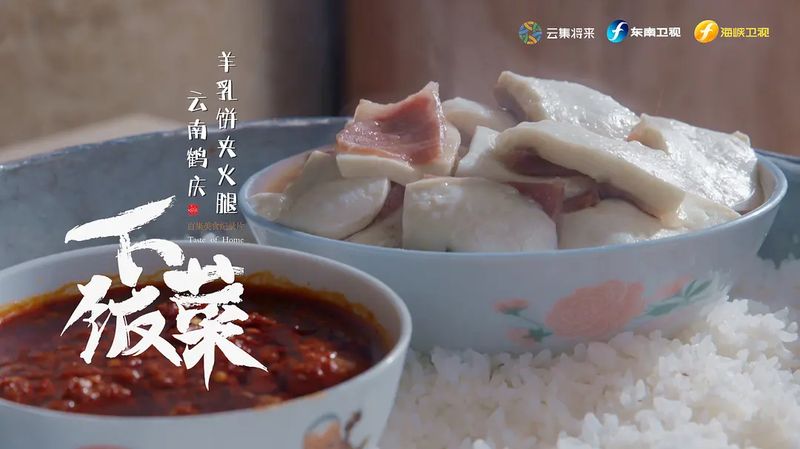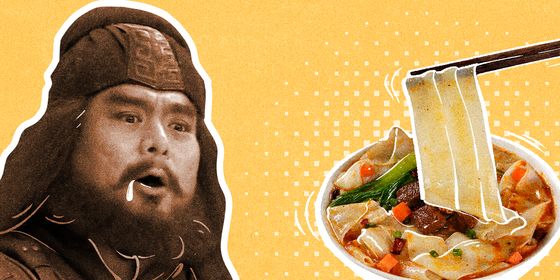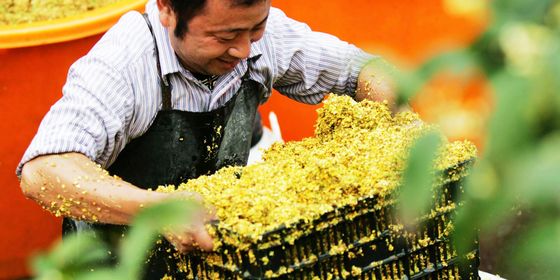A new documentary series, ‘Xiafancai,’ shows why China's simplest meals are also some of its most loved
For many Chinese raised on a diet of rice, a meal without a steaming bowl of it can leave one feeling empty, unfulfilled, and hungry, no matter how much other food they eat. So ubiquitous is the humble white grain that a whole genre of dishes exist just consisting of foods that make the perfect partner for rice.
“下饭菜 (xiàfàn cài, literally ‘food that go with rice’)” refers to homely dishes that make plain rice go down easier. In fact, the combination of these dishes with rice is so delectable that diners often end up chomping down far more of the white stuff than they normally would. Such meals can be found in just about every rice-eating household in the country, and everyone has a favorite.
Probably the simplest of all xiafancai is the legendary spicy sauce Laoganma, but there are many more nutritious (and delicious) rice partners out there. From stewed radish with sausage to fish head with tofu, these ingredients are best cooked in old-style wood-fired stoves, which bring out an earthy fragrance to food and give a rustic feel to dinnertime.
The ability of xiafancai to make diners consume huge amounts of rice almost subconsciously has seen them gain amusing nicknames such as “deceiving rice dishes (骗饭菜)” and “rice hammers (下饭榔头)” for their ability to “hammer” rice down the throat. Most of all, these dishes make the stomach feel at home.
A documentary series simply called Xiafancai, which began airing in April on streaming platform iQiyi, has tapped into viewers nostalgia for the humble dishes by taking viewers on a mouth-watering journey across China to (re)discover how ordinary people consume rice-partner meals in their apartments, farmhouses, street stalls, and even fishing boats. Viewers were also charmed by the relatable characters on camera—not professional chefs, but just as ordinary as the dishes they make. With little specialist equipment or written instructions, some chefs passed xiafancai recipes down through the generations by memory as they cooked for family members or friends. In a recent interview with The Paper, director Wang Shengzhi explained that when he first approached individuals to appear on the show, most of them first reacted with surprise: “I’m terrible at cooking. Why film me?”
But this is the point of the show—to revive viewers’ memories of the simple dishes their mother made them as a child, or the unpretentious pleasures of distinctive local food cobbled together from local ingredients. “The documentary itself is a perfect buddy for rice. I watch the episode on my phone when I have dinner. It gives me company and comfort, as I work in the city and only go home once a year,” one fan wrote on review platform Douban, where the show has a rating of 7.9 out of ten.
In the first episode, which takes place in Wuhu, Anhui province, we begin in a local market with stall-owners and market-goers asked to describe their favorite local dish. Many reply: Stewed tofu and fathead fish (胖头鱼炖豆腐). The camera then follows a local called “Grandma Zhu” as she makes her way home to her rustic kitchen, and begins to rustle up the dish.
The program shows the cooking process, so that viewers can make the dishes themselves later if they want. It also offers a glimpse of the chefs' lives. Grandma Zhu expertly decapitates the locally caught fathead carp and sautés it in a hot pan with sliced ginger and soy sauce until it becomes golden. She adds water and a spoonful of lard to improve the flavor, then she lets the tofu adsorb the gurgling fish gravy and sprinkles over some green onions. The dish is her granddaughter’s favorite, and we watch the girl gleefully taking a spoonful of the tender fish, tofu, and soup, eating it together with, of course, fragrant rice. With the granddaughter's parents away working in the city, she says she feels a sense of comfort from her grandma’s cooking.

Hubei's popular fried crayfish balls (VCG)
Another episode shows the process of making Qianjiang fried crayfish balls (潜江炒虾球). Qianjiang, Hubei province, claims to be the birthplace of farming crayfish in rice paddy fields, and is known as China’s “home of crayfish.” In his kitchen, Uncle Jiang removes the crayfish head, and then stir fries the body with peppers, salt, and sugar. The result is a dish that makes a spicy-sweet partner for plain rice. Uncle Jiang’s crayfish business requires him to live away from his family, so he video calls his young daughter while he eats. “You hang up first,” Jiang says to his daughter. “No, I won’t hang up,” the little girl replies.

Sheep's milk pancake with ham (羊乳饼夹火腿) from Yunnan (Douban)
In Heqing, Yunnan province, Auntie Yang makes sheep's milk pancake with ham (羊乳饼夹火腿). She milks her own sheep in the morning and uses the fresh milk to make a crispy pancake. Then she slices ham that comes from pigs she reared herself at home, and adds them on top of the pancake. During the shooting, one of Yang’s pigs stumbles, as if surprised, just as Yang mentions the ham. All of Yang’s pancake and ham slices are equally sized, and their precision takes director Wang by surprise: “You are making art,” he comments.
Amused and proud, Aunt Yang places the sheep’s milk cake with ham on rice and steams them together, with the rice absorbing the fragrance of both. The mix of the sheep’s milk cake, ham, and rice, mixed with some homemade chili sauce, is a sight to behold. Yang explains that she sells the snack, along with homemade quilts, at the local market in order to make money to send her two daughters to university, although she jokes, “I wish I could have them at home forever.”
The show has logged millions of views since it premiered, with audiences appreciative of its down-to-earth style which foregoes slick camera work and fancy editing in favor of capturing local life and cooking in the home. Viewers get to revisit dishes they used to enjoy as children, while each episode also provides a glimpse into local cuisine, dialects, and even leisure activities in different parts of the country. After they are done cooking, the show often follows the chefs as they visit a roadside barber for a haircut, or go singing in the park with friends.
The show plays up the tranquility of a home-cooked meal with classical music providing the background to cooking shots. “They move in a flowing, unhurried manner, as if dancing, or making music. So I came up with the idea of using classical music, especially waltz, to match their rhythm,” director Wang told The Paper. The idea is to reflect the calm of cooking at home. The cooks are relaxed; chopping, stirring, and seasoning with the flow that comes from a routine. And their clothing is spotless after they finish—good cooks don't get dirty easily.
By bringing some of the most basic yet beloved Chinese food to life, Xiafancai reminds viewers of food they once took for granted, while introducing them to new recipes they can try in lieu of the less nutritious (though tasty) Laoganma-and-rice combo. Just as a well-seasoned portion of xiafancai gives flavor to a plain bowl of rice, it’s the tales of people, culture, and lifestyles that spice up the documentary and make good food into great stories.














